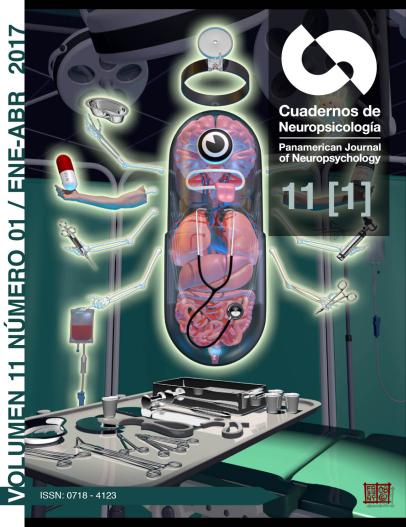Sistemas Neuro-Moleculares necesarios para el proceso de memoria
Abstract
ResumenÂ
Desde el punto de vista evolutivo, el proceso de la memoria se desarrolló a nivel cognitivo sobre todo en los mamÃferos, como necesidad para concebir el futuro, empleando elementos conocidos con el fin de responder al ambiente, de ahà su relación tan estrecha con otros procesos como el aprendizaje, el sueño, el movimiento y la atención, pues los recuerdos se crean con fines de pervivencia de las especies. Para lograr tal nivel de sofisticación, fue necesario el reclutamiento de distintas estructuras cerebrales que brindan soporte principalmente al hipocampo, lo que implicó diversas adaptaciones moleculares, por lo que se han reconocido procesos proteÃnicos que resultan en un sistema flexible que se adapta a partir de las necesidades del ambiente. Se han estudiado en este sentido, el papel de los glucocorticoides y de familia de las quinasas, asà como de procesos epigenéticos que permiten la modificaciones de las histonas nucleares para regular este tipo de procesos, a través de señales celulares para integrar la información molecular en la transcripción y transducción, que modulan la plasticidad sináptica bajo la restricción de los canales de calcio.
Â
Palabras clave: Proceso de memoria; evolución; hipocampo; glucocorticoids; canales de calico; proteÃnas; plasticidad sinápticas
Â
Abstract
From an evolutionary point of view, the process of memory evolved specially among mammals as a cognitive skill needed to conceive the future. This was possible using known elements in order to respond to the environment, however the process of memory cannot work independent of other systems such as learning, sleeping, movement and attention because memories are created first for self-preservation and second, as a tool for survival of the species. The evolution of the memory process requires the recruitment of different brain structures that primarily support the hippocampus, but additionally, involves some molecular adaptations such as the role of glucocorticoids, proteins and kinase family participation, which demonstrates a flexible activity that adapts and responds to environmental needs. The epigenetic processes possible thanks the modification of core histones, has an important role to regulate these processes through cellular signals that integrate molecular information in transcription and transduction, modulating synaptic plasticity under the restriction of calcium channels.
Keywords: Memory process; evolution; hippocampus; glucocorticoids; calcium channels; proteins; synaptic plasticity
Resumo
De um ponto de vista evolutivo, o processo de memória desenvolveu-se ao nÃvel cognitivo, particularmente nos mamÃferos, como uma necessidade de percecionar o futuro, fazendo uso de elementos conhecidos com o fim de responder ao ambiente, por isso se verifica uma reação tão estreita com outros processos como aprendizagem, o sonho, o movimento e a atenção, uma vez que as recordações se geram como uma forte fonte de segurança para a sobrevivência das espécies. Para alcançar tal nÃvel de sofisticação, foi necessário o aporte de estruturas cerebrais distintas que prestam apoio principalmente ao hipocampo, o que implicou diversas adaptações moleculares, uma vez que são hoje reconhecidos processos proteicos que resultam num sistema flexÃvel que se adapta a partir das necessidades do ambiente. Neste sentido, foi estudado o papel dos glucocorticoides bem como o da famÃlia das quinases, assim como os processos epigenéticos que permitem as modificações das histonas nucleares para regular este tipo de processos, através de sinais celulares para integrar a formação molecular na transcrição e transdução, que modulam a plasticidade sináptica sob a restrição dos canais de cálcio.
Palavras-chave: processo de memória; evolução; hipocampo; glucocorticoides, canais de cálcio; proteÃnas, plasticidade sináptica.
Downloads
How to Cite
Issue
Section
License
Articles published in this journal are protected under the Creative Commons Attribution-NonCommercial-ShareAlike 4.0 International (CC BY-NC-SA 4.0) license. This means that authors retain full rights over their research and publications at all times. As a journal, we fully respect and promote the principles of open access established by this license, allowing the work to be shared, adapted, and distributed for non-commercial purposes, provided that appropriate credit is given to the authors and any derivative works are licensed under the same terms.
Authors are responsible for obtaining the required permission when they wish to reproduce part of the material (figures, etc.) from other publications.
Likewise, CNPs allows authors to host in their personal sites or other repositories that they deem convenient the Final and Definitive Version of the published article with the format assigned by the journal. In no case do we allow access to preprints of the article under evaluation or already published.
When submitting an article to CNPs you are aware that all the contents of CNPs are under a Creative Commons License. In which it is allowed to copy and share the contents freely, always making reference to the origin of the publication and its author.





